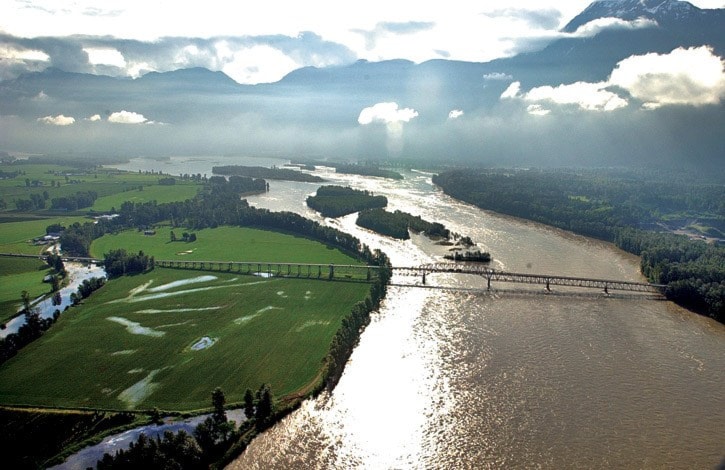The debate over gravel mining in the Fraser River is rearing its head.
An application under review by DFO to remove gravel by Seabird Island Band should be rejected to protect prime rearing and spawning habitat, says a biologist with the Fraser River Gravel Stewardship Committee.
A long-term management plan for the Gravel Reach — a sensitive stretch of the river from Mission to Hope — is something long overdue, said Otto Langer, fisheries biologist and aquatic ecologist with FRGSC.
"It was hoped that this recent lull in such in-river mining would serve as a starting point to develop a long-term cooperative management plan for this section of the river where flood risk reduction needs could be imbedded into an overall environmental management plan," wrote Langer in a letter to federal and provincial ministers.
The ideal management plan would include elements of shoreline protection, flood control and gravel and habitat conservation.
The four-year lull in gravel mining was a promising step forward, Langer wrote.
Now he says they're "taking a step backwards" and setting "a terrible precedent" for B.C. and Canadian rivers, since repeat mining could lead to permanent fish stock and habitat destruction.
Langer said "extensive damage" to juvenile Chinook rearing habitat from the proposed gravel removal is certain, "particularly on the main stem face of the bar."
Seabird Island Chief Clem Seymour took issue with the suggestion.
"This application is going through the process. We've been jumping through all the hoops," he said. "We've done all our due diligence and I think most of the environmental concerns were taken care of already."
Two companies were hired by Seabird Island Band to conduct environmental reviews, he countered.
"I've asked these environmentalists to come walk with me on the river, but they won't come," Chief Seymour said.
"This is the main channel of the river, but spawning and rearing channels are more in the estuary."
According to the letter:
"The proposed mining site is one of only two identified remaining while sturgeon spawning areas in the lower Fraser River for this species whose population appears to be suffering considerable declines in juvenile recruitment. As you should be aware, the white sturgeon is a species at risk," chided Langer.
"Such areas of this section of the Fraser have been repeated mined and it is quiet certain that the repeat mining in these key and sensitive habitat areas has had a permanent impact on fish and fish habitat.
"We are not convinced that the agencies have the expertise and the resources and maybe freedom to properly understand what has taken place on the river over the past 40 years and relate that to the long term sustainability of this natural gravel resource to maintain optimal spawning and rearing conditions for the many fish species that live in and depend upon this section of the river."
The Seabird Island Chief had a different perspective.
It's all a matter of "balance" and Sto:lo are, and have been part of the entire ecological system, the chief underlined. There's a lot of local knowledge and band officials have been working closely with different agencies, Seymour said.
"We're part of the system. We've always been part of the system since time immemorial. We're people of the river," he said.
DFO confirmed the gravel removal application is currently under review.
A decision on the Seabird application, seeking "authorization under Section 35 of the Fisheries Act" for the gravel removal, has not been made yet.
"Fisheries and Oceans Canada (DFO) acknowledges the fisheries values present in the gravel reach of the Fraser River and is mandated to conserve and protect the fisheries resource for the benefit of all Canadians," wrote DFO spokesperson Carrie Mishima in an emailed statement.
Reviews are conducted by DFO "to ensure appropriate avoidance, mitigation and/or offsetting measures" for the sustainability and ongoing productivity of commercial, recreational and aboriginal fisheries, she added.
jfeinberg@theprogress.com
twitter.com/chwkjourno
